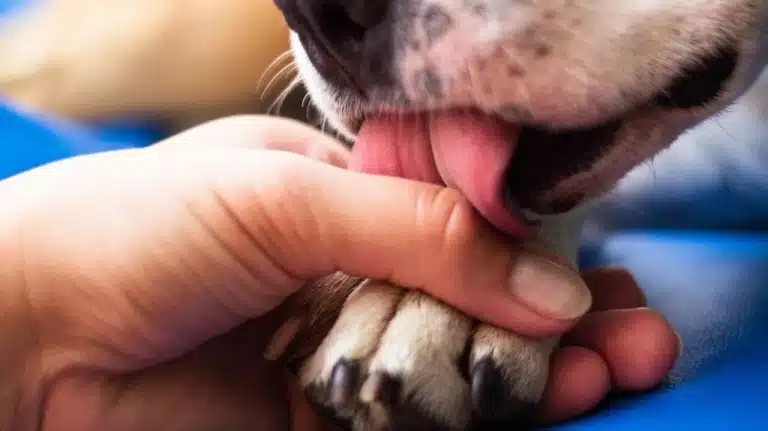When you have more than one dog in the house, the joy can quickly be overshadowed by concerns about conflicts between the pets. Whether you bring home two new dogs, or an older dog gains a new “brother” or “sister,” they don’t always get along right away. This can cause stress not only for the dogs but also for the owner. Building a friendship between pets is not an easy task, but it’s entirely possible. In this article, we’ll explore the main reasons for conflicts between dogs living together and share tips on how to help them find common ground.
Understanding the Causes of Conflict
When we face conflicts between our four-legged friends, the key to resolving the problem lies in understanding their internal motives. To effectively help your pets adjust, let’s look at two main causes that can lead to conflicts:
Hierarchical Structure of Dogs:
In the wild, wolves live in relatively stable social structures where every individual knows their place. Dogs have this instinct too, and in a domestic setting, they may determine who the leader is and who is the subordinate. Conflicts often arise when two dogs vie for the leadership role.
Competition for Resources:
Resources can include food, toys, sleeping spots, or even the owner’s attention. If one dog believes another dog threatens its resources, it might become aggressive or defensive.
Understanding these primary reasons can help you anticipate potential conflict situations and respond in time, preventing quarrels and fights.
Stages of Adaptation
The process of adapting two or more dogs to live together in one house can take time and requires patience. To make this process as smooth as possible, let’s consider a few basic stages:
Meeting on Neutral Ground:
To avoid territorial aggression or defense, introduce the dogs in a place where neither feels dominant. This could be a park, an open area, or another unfamiliar location. It’s important both animals are leashed and under your control.
Gradual Coexistence:
Start with short meetings at home, where one dog might be in another room or behind a barrier. Extend their time together gradually, monitoring their reactions.
Gradual Bonding:
If after several encounters you notice the dogs becoming more relaxed, you can allow them to spend more time together under your supervision. Ensure you can intervene quickly in the event of a conflict.
Remember, each dog is an individual, and what works for one pair might not work for another. The key is to observe the behavior of your pets and be ready to adjust your actions accordingly.
Rules for Living Together
Once the dogs have been introduced and are starting to adjust to living together, it’s important to establish certain rules to minimize the possibility of conflicts between them in the future.
Separate Resources:
To avoid conflicts over food, water, toys, or sleeping spots, try to have separate resources for each dog. If possible, feed them in different rooms, from separate bowls, or on different schedules.
Shared Play and Rest Time:
Ensure that both dogs get ample attention and playtime with you. This can make them feel valued equally and decrease the chance of jealousy.
Observing Territorial Behavior:
If one of the dogs shows signs of territorial aggression, they might need their secluded space. Consider this when arranging spaces in the house.
Controlled Introductions with Other Animals:
If you decide to introduce other animals to your dogs, such as cats, do it gradually and with supervision.
Consistency in Rules:
It’s crucial for all family members to adhere to the same rules and commands when interacting with the dogs. This prevents mixed signals and confusion for your furry friends.
Remember, a harmonious coexistence between dogs in the house is not only their responsibility but also yours as the owner. Your attitude, patience, and efforts play a vital role in creating a healthy atmosphere for all.
Recommendations from Highly-Qualified Experts at V.O.G DOG Beauty Salons
Living with multiple dogs under one roof can be challenging, but with the right approach, patience, and understanding, you can create a favorable environment for all members of your “four-legged family.” Here are some key recommendations for maintaining harmony:
Constant Observation:
Pay attention to your dogs and observe their behavior. This helps you spot early signs of tension and timely intervene.
Training and Socialization:
Stimulate your dogs’ minds by teaching them new commands and skills. Socialization is also crucial in helping them adapt to different scenarios.
Physical Activity:
Ensure your pets get plenty of physical activities. Walks, games, and other activities help relieve tension and boost their mood.
Seek Assistance:
If you feel the situation is getting out of hand, don’t hesitate to consult professionals for advice or help.
Successful coexistence of multiple dogs in your home is possible when you approach the situation with an open mind, heart, and a willingness to learn. With these tips and recommendations in mind, you can foster an environment where every member of your canine family feels safe, loved, and valued.









